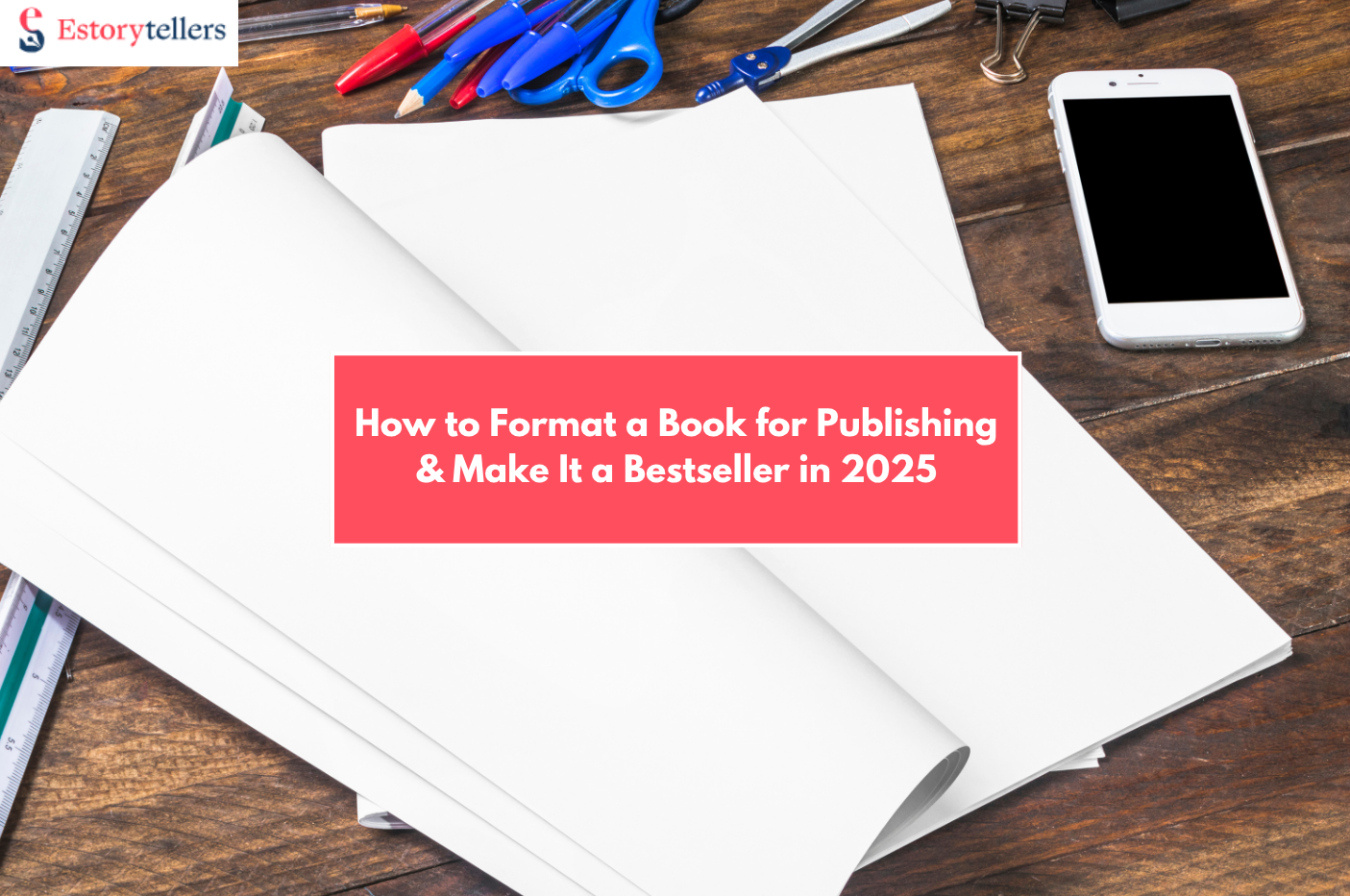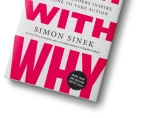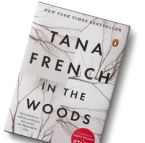
Formatting a book is a bit like preparing a meal for a guest. You’ve cooked up something great (your story), but now it’s time to plate it beautifully. Whether you’re self-publishing or preparing to query agents, formatting matters. It’s not just about aesthetics, it’s about clarity, flow, and professionalism.
This guide will walk you through everything you need to know about how to format a book for publishing, from page size and fonts to margins, headers, and even formatting for children’s books and comics. We’ll keep it simple and practical, and we’ll introduce you to Estorytellers, a service that makes the whole process easier when you’re ready for expert help.
Why Formatting a Book Properly Matters
Let’s start with why formatting matters:
- First impressions count: Before anyone reads your story, they’re absorbing how it looks.
- It affects readability: Clunky margins, poor spacing, or inconsistent styles make readers work harder.
- Professional formatting builds trust: A clean, properly formatted book signals to readers and publishers that you’re serious.
- Most publishing platforms have strict requirements: Whether you’re using Amazon KDP, IngramSpark, or another service, proper formatting is essential for acceptance.
And yes, even your favorite bestsellers went through careful formatting before making it to print or ebook.
The Tools You Can Use to Format a Book
You can format your book manually, or use software made specifically for authors. Here are your main options:
- Microsoft Word: Great for basic formatting and widely used by authors. Most publishers accept Word files.
- Google Docs: Useful for collaborative writing and basic formatting, but you’ll need to convert files before submission.
- Atticus or Vellum: These are modern tools built just for authors, with intuitive formatting and export options.
- Adobe InDesign: Ideal for visually rich books like comics or picture books. It offers full control over layout but has a learning curve.
- Reedsy Book Editor or Draft2Digital: Free online tools that let you format, style, and export clean files.
If this all sounds like a lot, don’t worry—Estorytellers helps you choose the best option and can handle all formatting for you, no matter your genre.
Make Your Book Look as Good as It Reads
Our expert formatting gives your manuscript a professional layout for print and eBook platforms.
Format Your BookStep-by-Step Guide: How to Format a Book for Publishing
Let’s break this down step by step.
1. Set Up Your Page Size and Margins
For printed books, common trim sizes include:
- 6 x 9 inches (standard for paperbacks)
- 5.5 x 8.5 inches (more compact and common for fiction)
- 8.5 x 11 inches (often used for workbooks or educational materials)
Set your document to the correct page size before formatting anything else.
Margins should typically be:
- Top and bottom: 0.75 to 1 inch
- Left and right: 0.75 to 1 inch
- Add 0.125 inches for a bleed if your book includes full-page images or illustrations.
Gutter margins (extra space near the spine) are essential for print books. The thicker the book, the wider the gutter needs to be.
2. Choose Standard Fonts and Line Spacing
For most books, keep it classic:
- Font: Times New Roman, Garamond, or Georgia
- Size: 11 or 12 point
- Line spacing: 1.15 to 1.5 for printed books
- Alignment: Left-aligned (not justified, unless you’re creating a final print version)
- Paragraphs: Use a 0.3 to 0.5-inch first-line indent; no double spacing between paragraphs
Avoid funky fonts, odd sizes, or colored text—especially for fiction or nonfiction intended for traditional publishing or wide release.
3. Add Proper Chapter Titles and Page Breaks
Each chapter should start on a new page.
- Chapter titles should be centered and a few lines down from the top.
- Use consistent font and size (larger than body text, like 14–16 pt bold).
- Insert a page break, not just a bunch of line returns.
Pro tip: If you’re working on a novel, don’t forget to include scene breaks within chapters. You can use a centered symbol like *** or # between scenes.
Your Story, Beautifully Structured
We ensure perfect margins, spacing, chapter flow, and layout across all devices and formats.
Get Professional Formatting4. Set Up Page Numbers, Headers, and Footers
Page numbers usually go at the bottom center or top outer corners.
- Headers can include your name and book title (small, unobtrusive text).
- Page numbers usually start from the first chapter, not the title or copyright page.
5. Prepare Your Front Matter
The front matter includes all the pages that come before Chapter 1:
- Title Page: Book title, author name
- Copyright Page: Year, rights reserved, ISBN (if applicable)
- Dedication (optional): A short note to someone special
- Acknowledgments (optional)
- Table of Contents: Mandatory for nonfiction and ebooks
Your formatting here should be centered, clean, and simple.
6. Format the Body of Your Book
Your manuscript’s main body should have:
- Consistent font, spacing, indentation
- Properly marked chapters and scenes
- Smart use of italics (for thoughts, emphasis, or foreign words)
- Clear transitions between sections
- No strange symbols or “invisible” formatting errors (like random tabs or double spaces)
Double-check for style consistency: spelling (US vs. UK), punctuation marks, dialogue formatting, and bold/italics usage.
7. Handle Images and Illustrations Carefully
For comics, children’s books, or photo-heavy nonfiction, you’ll need:
- High-resolution images (300 DPI or higher for print)
- Proper bleed and margin settings
- Consistent image placement (centered or aligned with text)
- Captions if necessary
Remember, images can shift during file export—preview carefully before finalizing.
8. Add Your Back Matter
The back matter helps wrap things up and connect with readers.
- About the Author
- Acknowledgments (if not at the front)
- Call to Action: Include links to your website, newsletter, or social media.
- Other Books by the Author (great for building a series)
Think of this section as your “next step” moment with readers—what do you want them to do after finishing the last page?
9. Export to the Right Format
When you’re done, save or export your book in the right file type:
- For print: Export as a PDF with embedded fonts. This ensures layout integrity.
- For ebooks: Export as EPUB (the most widely accepted) or use tools like Kindle Create to prepare for Amazon.
Always review the exported file before uploading to a platform.
Don’t Let Bad Formatting Ruin a Great Book
We clean up your file and give it a polished, publish-ready structure trusted by top platforms.
Fix My FormattingGenre-Specific Formatting Tips
Fiction (Novels):
- Use first-line indents
- Stick to one POV per scene
- Keep formatting invisible—let the story shine
Nonfiction:
- Use headers and subheaders
- Include bullet points, lists, and numbered sections
- Add footnotes or citations if needed
Children’s Books:
- Ensure text doesn’t get lost in illustrations
- Large fonts (16–24 pt) for early readers
- Wide spacing and color-safe contrast for readability
Comic Books:
- Format panels clearly with a consistent layout
- Dialogue bubbles should follow the reading flow
- Use bleed/crop marks for full-page illustrations
Comic book formatting is more visual than textual. Estorytellers offers special comic formatting services to help you get the balance just right.
Avoid These Common Formatting Mistakes
- Using multiple fonts across chapters
- Extra line breaks or inconsistent spacing
- No page numbers or inconsistent headers
- Ignoring ebook or print platform requirements
- Exporting in the wrong file type
- Leaving typos or inconsistent styles unchecked
Little details can make or break a reader’s experience.
Ready for Kindle, IngramSpark & More
Our formatting services cover both print and digital—perfect alignment, font selection, TOC, and more.
Format for All PlatformsWhy Work with a Professional Formatting Service?
Sure, you can do it yourself. But if formatting feels overwhelming—or you want a clean, industry-standard result—you may want help. That’s where Estorytellers shines.
They offer:
- Print and ebook formatting for all genres
- Custom layout for comics and illustrated books
- Clean exports for Amazon KDP, IngramSpark, and more
- Personalized support (not just templates)
When you work with Estorytellers, you don’t just get a formatter. You get a guide who understands your genre, your audience, and your vision.
Final Thoughts
Formatting may seem like the boring part of writing a book—but it’s the finishing touch that makes your story feel real. It’s what turns your idea into a book that’s ready for the world.
If you’re not sure where to start—or just want to be sure it’s done right—Estorytellers is ready to help. They’ll handle the details while you stay focused on what you do best: telling stories.
So, go ahead. Format your book, polish your prose, and get ready to hit publish.
Your story deserves to be read. And it deserves to look its best.
Frequently Asked Questions (FAQs)
Q: Do I need special formatting for Kindle?
Yes. Kindle has specific layout guidelines. It prefers reflowable text in EPUB format. Tools like Kindle Create help, or you can let a service like Estorytellers handle it.
Q: Can I format my own children’s book in Word?
You can, but Word doesn’t handle image-heavy layouts well. For best results, use InDesign or hire a formatter.
Q: How long does book formatting take?
DIY formatting can take a few days, especially if you’re new. A professional can usually finish it in under a week.
Q: Do traditional publishers require specific formatting?
Yes. Manuscripts for submissions typically need 1-inch margins, 12pt font, double spacing, and basic headers.
Q: Can I use templates?
Yes. Many platforms offer free templates. But be sure to customize and check for compatibility.






























